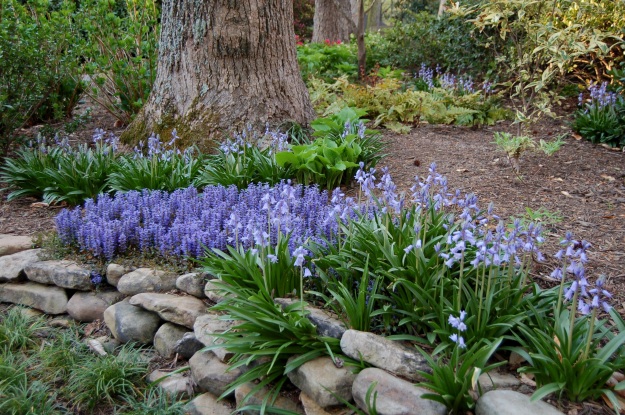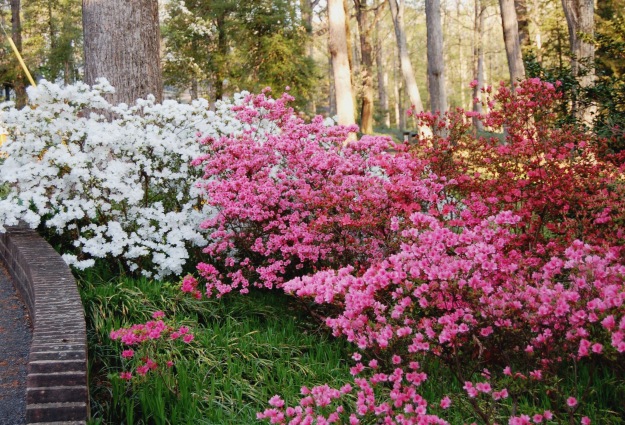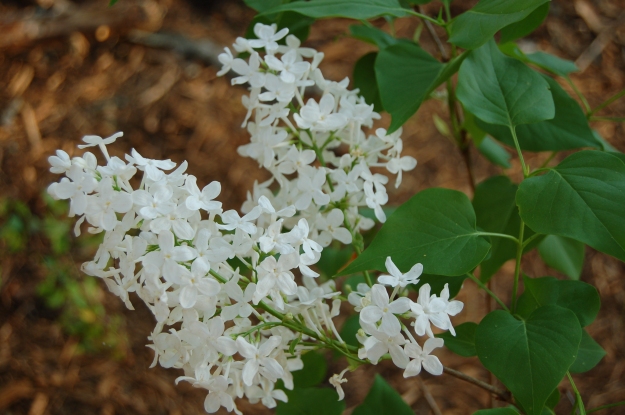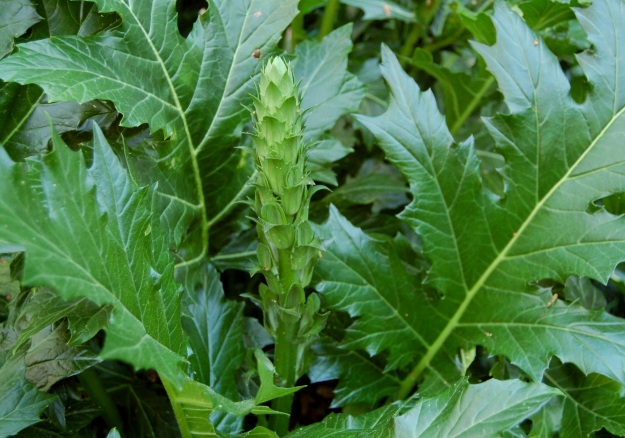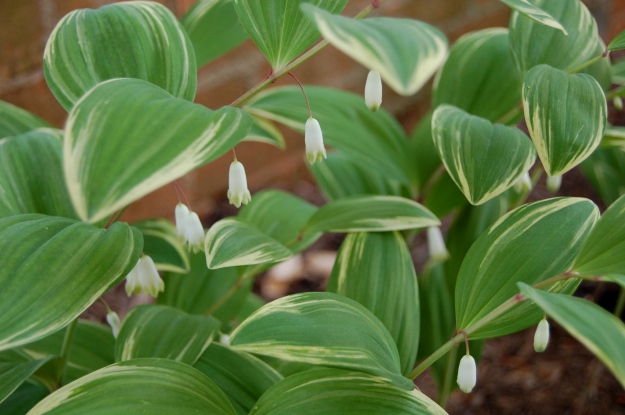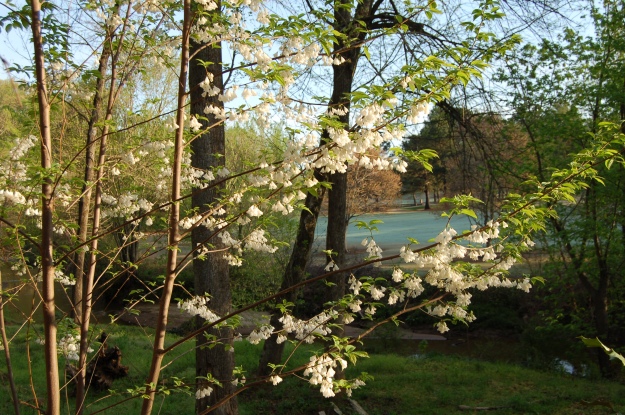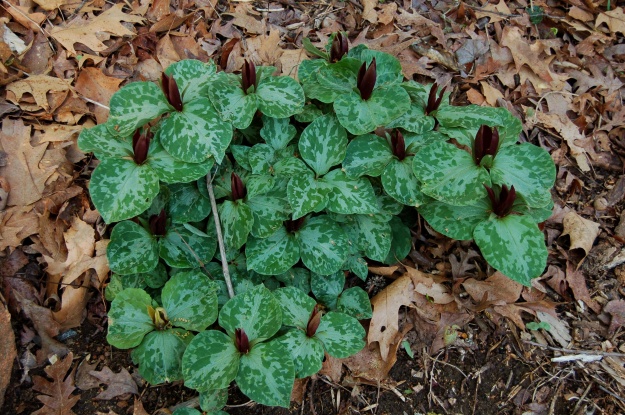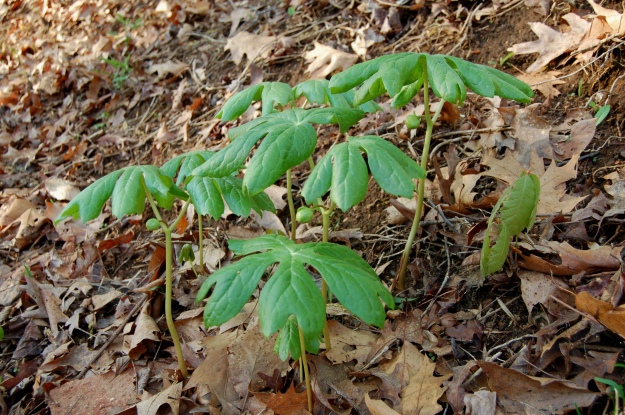I’ve had two days in the garden in the past week and things are showing enough improvement to give an update. On Wednesday I transplanted roughly 3 dozen Sweet Betsy trilliums from the development site off Pleasantburg Drive (about a city block from my back garden through the woods). I also finally emptied the last plants from the holding area. Nearly all went in the woodland, with those needing the most sun being planted closest to the river or in little pockets of light, here and there.
Saturday was devine, with temps in the 70s and plenty of sun. Tim helped me move another dozen or so trilliums plus a few Christmas ferns and then I marked all the native plants (130+) in the woodland with new orange flags. Marking the plants is important, at least for now, so I don’t loose track of them when they’re dormant. Finally, I worked on pulling the little bits of ivy that show up in spring and other small tasks that always pile up but seldom get done.
The Carolina silverbell are in full flower, with their white hoop skirt-like blooms hanging in clusters below the braches. I counted roughly a dozen types of pollinators, mostly bees, among the blooms.
The second most exciting thing to happen in the woodland is the emergence of the mayapples. You can tell right from the get-go if the plant will have a bloom or not, as the shoot comes up with the flower bud at its tip.
In just a few days the leaves take on their umbrella shape and begin to rise above the bloom. In time, the flowers produce a fleshy, egg-shaped fruit that is edible when ripe, but all other parts of the mayapple are highly poisonous to humans and most other animals.
Flower buds on the sweet shrubs are roughly the size of an English pea. The honey-scented blooms of Fothergilla are beginning to form, and just above the retaining wall, the serviceberry are flowering. Best of all, I caught sight of a giant turtle in the river.
And here are a few signs of spring in the front garden.














